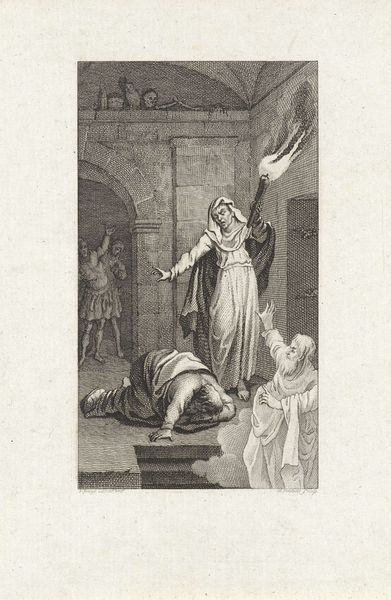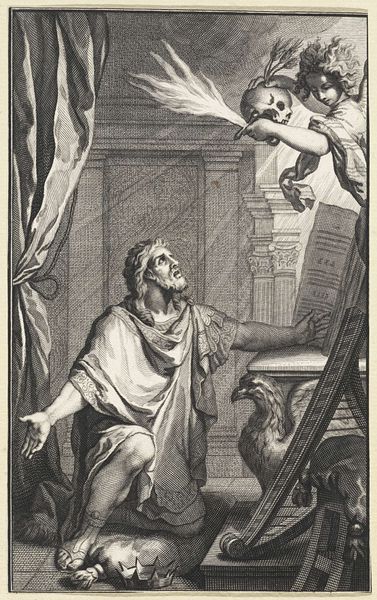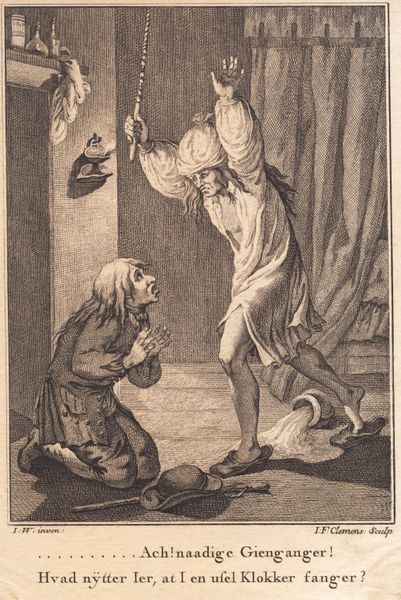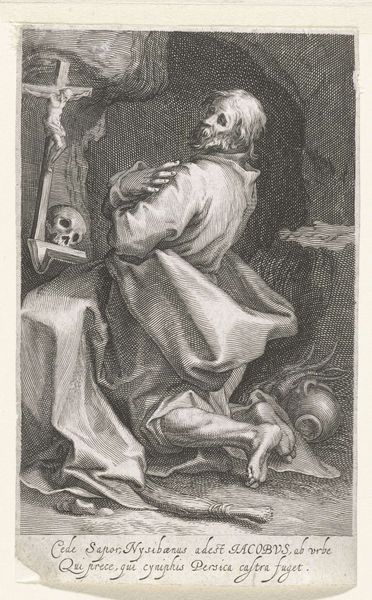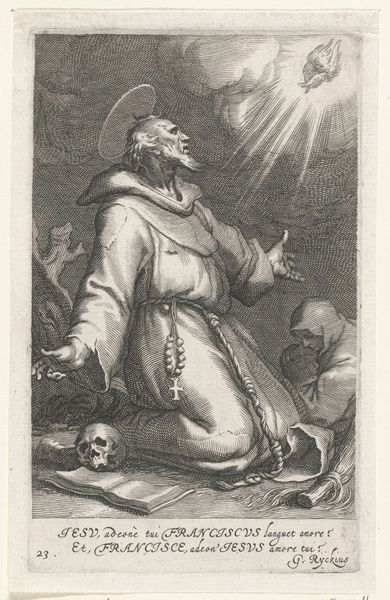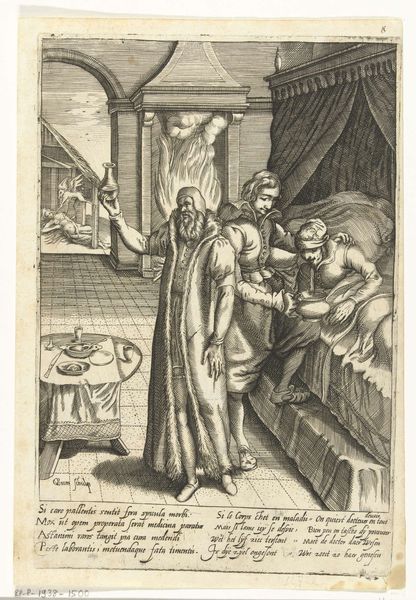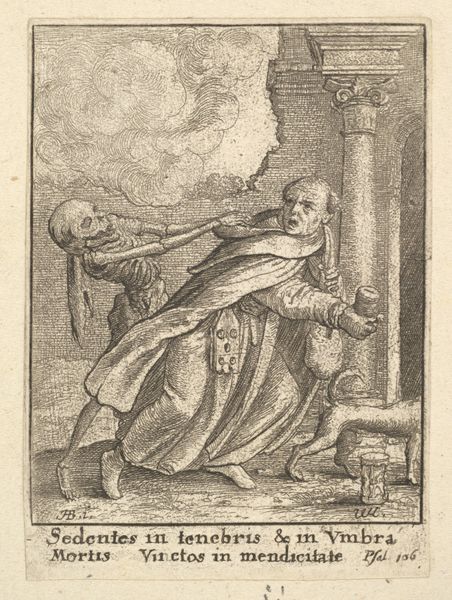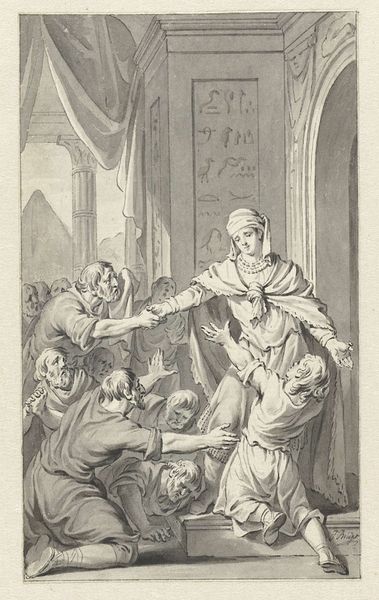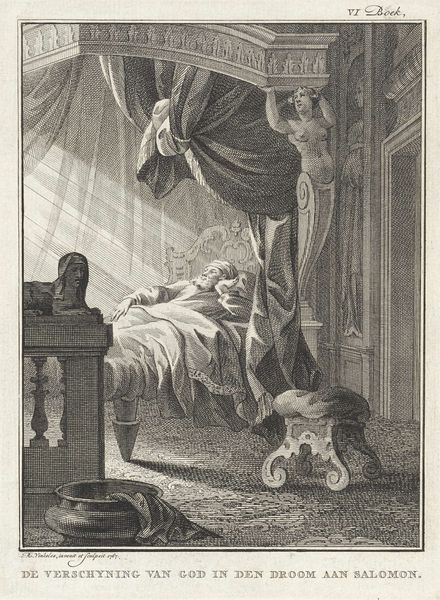
drawing, watercolor, charcoal
#
drawing
#
narrative-art
#
charcoal drawing
#
figuration
#
watercolor
#
coloured pencil
#
romanticism
#
charcoal
#
history-painting
Dimensions: height 344 mm, width 244 mm
Copyright: Rijks Museum: Open Domain
Curator: Look at this compelling image capturing a pivotal moment in Dutch history. David-Pierre Giottino Humbert de Superville created "The Murder of William of Orange," sometime between 1780 and 1849. It's rendered in charcoal, watercolor, and colored pencil, primarily a drawing medium. Editor: It’s bleak, isn't it? The high contrast in the archway, with stark light and shadow, really amps up the drama. The dog looks sickened – did the artist intentionally mirror his horror through its prone form on the stairs? Curator: Absolutely. The artist harnesses dramatic figuration to enhance the visual narrative. This staged scene of the assassination relies on romanticism to render historical events, so the materiality reflects its historical context as well. Consider how drawings during that period were often studies, drafts, and working documents in preparation for painting; so to find this scene as a "finished drawing" speaks to a transition away from that traditional, academic hierarchy. Editor: But what is it saying, in essence, through this careful construction? Look at the care given to depicting his fall backwards, his outstretched arms, seemingly begging, when this drawing appears as a scene of brutal murder. What labor was necessary to construct this myth? And for whom? Was it propaganda intended to secure loyalty, or historical analysis and critique of Dutch values and society? Curator: That visual tension makes it a really successful history painting. Humbert de Superville captures both the violence and the potential for tragedy within a rigid pictorial structure, the dog forming the center and drawing our attention immediately into the picture plane to Willem, in whom we see that central tension playing out, ultimately questioning whether there is room for nobility. Editor: It truly forces a re-evaluation of not just history, but the active construction and presentation of that history, by examining the artist's methods themselves. Curator: It underscores how potent and visually complicated seemingly straightforward representational artworks can be when we dissect their symbolic content and form. Editor: Exactly, looking closely at these pieces allows a deeper consideration of who funded what, and who benefited from these tales over time.
Comments
No comments
Be the first to comment and join the conversation on the ultimate creative platform.
